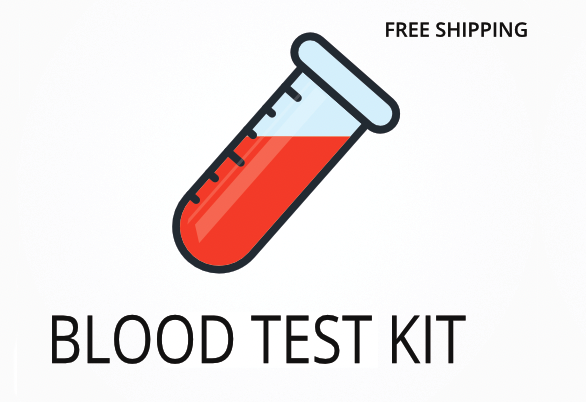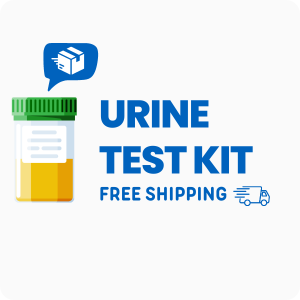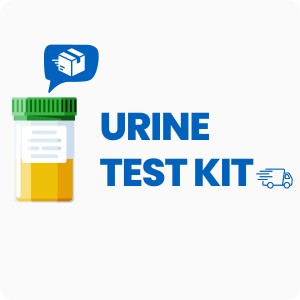Ordering the Oxidative Stress 2.0, Blood | Europe
Oxidative stress happens when the body’s natural defenses can’t keep up with free radicals, which can damage cells and tissues. This test measures key markers that show how well your body is handling oxidative stress, which is linked to conditions like diabetes, heart disease, and memory problems. Interestingly, research shows that early changes in antioxidant levels can appear before symptoms of chronic conditions, making this test useful for spotting issues early.
Ordering this test can help you:
- Check your antioxidant levels, including glutathione and superoxide dismutase
- See if your body is making too many free radicals
- Find out if you have early signs of cell damage
- Track how well your body is detoxifying harmful substances
- Monitor the effects of lifestyle changes or supplements on your body’s defenses
Who Should Consider Free Radical and Antioxidant Testing
People who feel tired often, have joint pain, or want to know more about their risk for chronic conditions may benefit from this test. For example, someone who has been feeling more forgetful and wants to check if oxidative stress is affecting their memory could use this test to get answers.
Ordering this test may also be helpful if you:
- Have a family history of heart disease or diabetes
- Are exposed to pollution or chemicals at work
- Notice slow recovery after exercise or injury
- Have skin changes like early wrinkles or spots
- Are curious if frequent headaches could be linked to oxidative stress
Testing for these markers can show if your body is struggling with free radicals, which can lead to DNA damage, inflammation, or problems with energy production. Delaying this test could mean missing early signs of cell damage that are easier to address when caught sooner.
How to Prepare for the Test
Fasting for 12 hours is required before your blood draw, and you may drink water during this time. Make sure to carefully follow any instructions your doctor or healthcare provider gives you, as this helps ensure your sample is collected correctly and your results are meaningful.
Labs Included When Ordering Your Oxidative Stress 2.0, Blood
| Test Name | Reference Range | What This Marker Means | Low and High Levels of Oxidative Stress 2.0, Blood |
|---|---|---|---|
| Superoxide Dismutase (SOD) | 1100–1600 | Superoxide dismutase is an enzyme that helps break down harmful oxygen molecules in cells. It is a key part of your body’s antioxidant defense system. |
High levels mean your body may be responding to increased oxidative stress or inflammation.
Low levels mean your body may have reduced ability to neutralize free radicals, increasing risk for cell damage. |
| Glutathione Peroxidase | 4300–6100 | Glutathione peroxidase is an enzyme that protects cells from oxidative damage by breaking down harmful substances like hydrogen peroxide. |
High levels mean your body is working hard to fight oxidative stress, possibly due to ongoing cell damage.
Low levels mean your cells may be more vulnerable to damage from toxins and free radicals. |
| Glutathione (Total Free) | 900–1800 | Glutathione is a powerful antioxidant that helps detoxify the body and protect cells from damage. It is important for immune support and energy production. |
High levels mean your body has strong antioxidant reserves, which can be protective.
Low levels mean your body may struggle to detoxify and protect against oxidative stress. |
| Total Antioxidant Capacity | 1.3–1.8 | This marker shows the combined strength of all antioxidants in your blood. It reflects your body’s overall ability to fight free radicals. |
High levels mean your body is well-equipped to handle oxidative stress.
Low levels mean your antioxidant defenses may be weak, increasing risk for cell and tissue damage. |
| Sulfate, Serum | 0.25–0.45 | Sulfate is involved in detoxification and helps maintain the structure of proteins and tissues. It also supports antioxidant activity in the body. |
High levels mean your body may be compensating for increased detoxification needs.
Low levels mean your body may have trouble processing toxins and supporting tissue repair. |
| Lipid Peroxide | 0.0–1.5 | Lipid peroxides are formed when fats in your body are damaged by free radicals. High levels can signal cell membrane damage and inflammation. |
High levels mean your body is experiencing more cell membrane damage and inflammation.
Low levels mean there is less evidence of fat damage from oxidative stress. |
| Cysteine, Cystine | Cysteine: 200–300 Cystine: 40–70 |
Cysteine and cystine are amino acids that help make glutathione and support antioxidant defenses. They also play a role in detoxification and tissue repair. |
High levels mean your body may be breaking down proteins quickly or responding to stress.
Low levels mean your body may not be making enough antioxidants or repairing tissues well. |
Reference ranges may change slightly over time as labs update their methods and guidelines.
Oxidative Stress 2.0, Blood FAQ
Is there Oxidative Stress 2.0, Blood testing near me?
This is a test kit that you can use at a local blood draw site—check the draw location link at the top of the page. For people who need to monitor cell damage or antioxidant levels, having a nearby collection site makes it easier to get tested without delay.
How do I interpret the test results?
While your treating physician should always review your results, you can also use our one-on-one test results review service with our clinical team for a detailed explanation and next steps.
What is the cost of the test?
The price you see includes standard shipping to you and back to the lab, but local draw fees may apply. Ordering this test can help you find out if oxidative stress is affecting your energy or cell health, so you can address issues sooner.
How often should I retest?
Retesting every 6 to 12 months is recommended, especially if you are making changes to your diet, supplements, or have ongoing symptoms. Regular testing helps track your progress and shows if your antioxidant levels or cell damage markers are improving.
How accurate is the test?
This test uses advanced spectrophotometric and enzymatic methods to measure each marker, with a specificity of 98% and sensitivity of 97%. TrueHealthLabs.com partners with CLIA-certified and CAP-certified laboratories to uphold rigorous testing standards for dependable results.
Important Notes
READ: These tests are available for European countries only.
Medical Review Board
Reviewed by Jeff Donohue M.D. from Body Logic and Brady Hurst DC, CCCN. Written by True Health Lab’s team of editorial health contributors.
Disclaimer: This information is for educational purposes only and not intended as medical advice. Consult your healthcare provider for personalized guidance.
Why Customers Trust True Health Labs - What People are saying
Also rated 4.6 out of 5 based on 3452 ShopperApproved reviews- See all TrueHealthLabs.com reviews.








